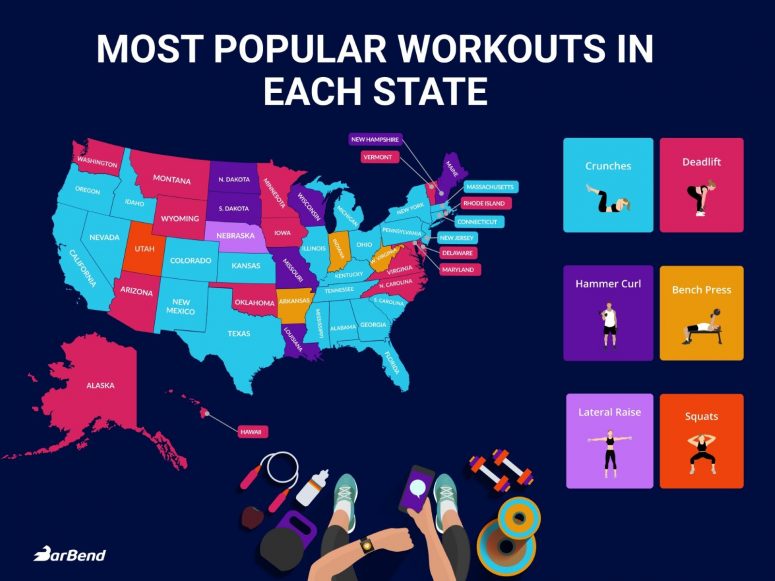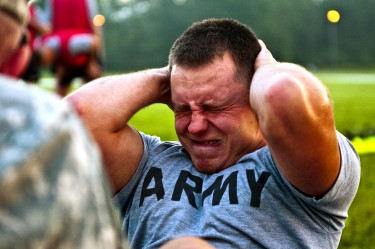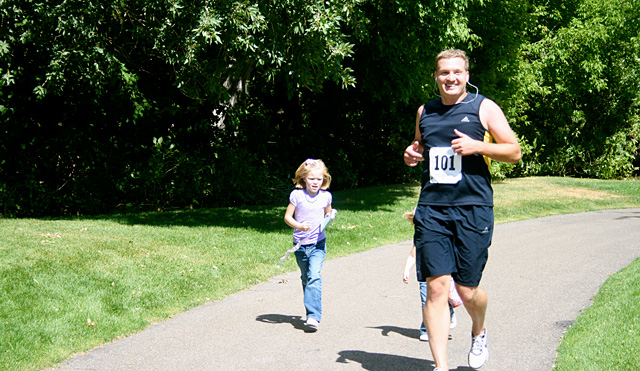
Wikimedia Commons
One of my goals in life is to become a centenarian, someone over 100 years of age. A few years ago, a team of researchers identified four areas that had the highest number of centenarians per capita in the world. They studied these people, wrote a book about them, then distilled their similar lifestyles down to a set of consistent life-giving habits.
And by life giving, I really mean death halting. Since there’s no brake on death, the best you can do is ease off the accelerator. With my added commentary, here are eight ways to do just that, as compiled by author Dan Buettner:
- Find a physical activity you enjoy and keep doing it. Do it for as long as you enjoy it. If and when you tire of that activity, find something else that pleases you. For example, you could start jogging, and if that becomes a bore, move to biking. Then swimming. Then Pilates. Then kickboxing. Then underwater basket weaving. Whatever it is, be sure to do it at least three times a week, moreso for idle or cubicle people. (In my case, since I sit at a desk and work from home, I have to move a lot more than most people to achieve the optimal amount of fitness.)
- Stop eating when you’re no longer hungry, as opposed to being full. There’s a difference. About 20% less food per meal, in fact. In short, this is the best known way to eat less. Stop when satisfied instead of stuffing yourself. Continue reading…

Crunches are the most popular exercise in America, according to a new study by Bar Bend. The study analyzed Google search data to uncover the most popular fitness moves in all 50 states. This is what they found:
- Crunches. Out of all the states’ favorite exercises, crunches are the most popular. With 23 out of 50 states searching for it the most (including New York, California and Florida), the crunch is one of the best ways to train the abdominal muscles. Other than strengthening the core, this type of exercise dramatically improves the posture and the mobility and flexibility of the body.
- Deadlift. Deadlift is one of the most loved (and hated) power lifting exercise by gym-enthusiasts. With 16 out of 50 states searching for it the most (including Virginia, Minnesota and Hawaii), deadlift is the second most popular workout across the country. Deadlifts can help reducing lower back pain and improving core strength.
- Hammer curl. With 6 out of 50 states searching for hammer curl exercises the most (including Missouri, New Hampshire and North and South Dakota), hammer curl is the third most popular exercise in the US. Other than increasing biceps strength, this exercise boosts wrist strength and refines muscle endurance.
- Bench press. Bench press is the fourth most popular exercise across the states, with three out of 50 countries searching for it online (Indiana, Arkansas and West Virginia). Despite being a very good exercise for increasing general upper-body strength, the bench press can be replaced by regular gym goers wanting to work the same same muscles with barbell floor or overhead press, push-ups, or dumbbell bench press.
- Squat. The squat is the most popular exercise only in Utah, with a total average search volume of 5,400 searches per month. Other than improving posture, strengthening core and leg muscles, and defining glutes, squats also prevent knee and ankle injuries.
- Lateral raise. Finally, the lateral raise is the most popular exercise in the state of Nebraska, according to the study. Lateral raises help strengthening the shoulder muscles and improving the general upper body strength.

My sister-in-law challenged our family to a plank-off recently. Person who could plank the longest wins. “I don’t know,” I said. “I can’t stomach those things for 30 seconds.”
Or so I told myself.
Before continuing my story, a quick note: Like any inherently lazy human, there are a lot of exercises I hate doing. But planks are the worst—invented by Satan himself. They’re right up there with Turkish getups, mountain climbers, and wall sits as most uncomfortable for me. So I wasn’t enthused to participate.
“I’m in!” my wife said. My daughter, too, was excited to compete. “I’ll try,” I relented, offending Jedi Masters everywhere. Continue reading…

Grant Wood/Wikimedia Commons
As a leading psychologist, Shawn Achor has spent two decades studying happiness. His bona fides include award-winning researcher and teacher at Harvard, best-selling author on positivity, and popular TED lecturer.
So when he speaks you should listen. For instance, Achor asserts our circumstances — including age, race, gender, social status, and wealth — only account for 10% of our happiness. The rest is determined by our genetic baseline for happiness (i.e. optimist vs pessimist) and our individual intentions, including the way we spend our time and the things we ponder.
Obviously, happiness means different things to different people. But there are plenty of standardized things we can do to boost our chances of finding it. Somethings such as knowing oneself, learning how to forgive, and balancing the personal, professional, and social demands on our time can be life-long pursuits.
But other happiness-building attributes are quite easy, Achor argues. In order from least difficult to most difficult, they are as follows: Continue reading…

Good summation of advice that certainly mirrors my independent research. #bookmark

Photo: Lindsey Snow
The young man was hiding something. Perhaps unknowingly, but he was still hiding something.
He had spiked hair with an Archie look to it, albeit dishwater blonde instead of bright. A little under six feet tall, he wore an oversized t-shirt and basketball shorts like something out of the ’90s—two sizes too big.
He was pigeon toed, around 175 pounds, and with a case of mild acne. I’m guessing he was 20, give or take a few years.
Why was I so concerned with this guy’s looks, especially as a heterosexual man in a public gym?
I’ll tell you why. Continue reading…
Why do some people willingly participate in unpleasant things like regular exercise, cold showers, bland but healthy food, sacrificial restraint, and drinking lots of water, which cause a lot of annoying bathroom runs?
The short answer: Everything has a price. Good health is no exception. In exchange for long-term health, humans must endure short-term discomfort associated with the above.
In more succinct terms, “no pain, no gain.” That’s the catchphrase Jane Fonda popularized in ’80s workout videos to express that rewards are worth the work. Or as David Morris wrote in The Scientist, “The road to achievement runs only through hardship.”
In my experience, that’s the case for good health as much as anything in life. Of course, knowing that won’t make difficult things easy. But it does give them meaning, which I believe lessens suffering.
Cold showers went viral this year. I jumped on the bandwagon this summer and haven’t gone back, not even in winter. Here’s why:
- Indisputable health benefits. Cold showers and winter swimming aren’t fun. Neither is exercise. Humans do all three primarily for the health benefits, which include more vigor, less stress, higher immunity, improved complexion and skin, better circulation, and elevated alertness. Since switching to cold showers, I feel more alive not only in the act, but after the fact. Continue reading…

U.S. Army
Beyond the obvious weight loss and cardiovascular benefits of regular fitness, here are a few bonus consequences of working on your body:
- Your skin improves. If vanity is your top goal for getting in shape, I’ve got good news: Regular exercise, particularly when coupled with a healthy diet, does wonders to your hue. If you’re white and pasty like me, your skin starts glowing the longer you work out. It looks healthy, full of color, slightly tan. The reason: “Exercise enhances blood flow to skin,” says Dr. David Katz. Plus, sweating works as a natural cleaning agent, unclogging pores and removing oil and dirt for fewer zits. My skin has never looked healthier. What a pleasant surprise. Continue reading…
 If you’re happy with your health, nutrition and self-image, skip to the next post. If not, read on.
If you’re happy with your health, nutrition and self-image, skip to the next post. If not, read on.
In nine years of marriage, Lindsey and I have never owned a weight scale. Not one.
Why? Because they’re superficial, largely meaningless, and a lousy motivator of long-term health. Continue reading…

In 2009, I started running in the ugliest shoes ever. The first time I did it, my calves and feet ached in places they hadn’t before. The second time I did it, I knew I’d never run in cushioned shoes again.
With the exception to select frozen days of winter, in which I run in Nike Free 3.0s to stave off frost bite, I’ve run in Five Finger Classics (pictured) or KSOs ever since. Here’s why: Continue reading…
Because they’re constantly chaperoning 120 players, “most of them 18-22 years of age,” reports the Associated Press:
Joker Phillips is 47 and in his first season as Kentucky’s head coach after 20 years as an assistant. He said he has made sure to keep good habits despite the demands of the job. “I still work out every day. I still get the same amount of sleep. I just think this game is important to me, but my family and personal health is more important,” he said. “I am a competitor and I do want to win, but I’m not going to let this game ruin my life.”

I’m not crazy about their using corn sweeteners. And they won’t make you jump higher or run faster. But sports drinks (read: bottled sugar water) such as Gatorade and Powerade actually work when it comes to endurance boosts. Marathoners know this, as does this new study by the University of Edinburgh.
Scientists discovered that 12 to 14-year-olds could play for almost a quarter longer during team games when they drank an isotonic sports drink before and during games. The sports drink helped the adolescents continue exercising for up to 24% longer than those who were given a non-carbohydrate placebo drink.
To be clear, you can make homemade sports drinks that are nearly as effective. Just mix water with a little sugar, some flavoring, and a dash of salt. (Most isotonic drinks are a 6% carbohydrate-electrolyte solution.)
They key is to know when to reach for sports drinks over good old water. And all the research I’ve read suggests water is more than suitable for workouts under an hour. Anything longer than that and your body will benefit from the extra dose of electrolytes, carbs, sugar, and salt.
I know mine does during long distance runs.
See also: Top 5 Powerade flavors

Sound advice.
I like running.
With exception to an injury hiatus, I ran several times a week over the past two years. And since reading Born To Run, I do so enthusiastically (not begrudgingly like I once did).
I normally run continuously for 45 minutes to an hour. On occasion, two hours—whatever I feel like really. I don’t time myself or track miles—an act that makes running feel like work—I just run.
Two weeks ago, I was feeling especially light on my feet. When I left the house on an empty stomach that Saturday, I didn’t plan on running for three plus hours, but I did. I also didn’t take water or food with me, and nearly put myself in the hospital as a result.
Continue reading…
Some runners are automatic. Day in, day out, they hop on treadmills, negotiate cross-country trails, or sidestep pedestrians and cars in the city. It’s as if “Just do it” was baked into their DNA.
I am not one of them. Despite my efforts, I still get discouraged and have to continually assure myself while running that “I can do it.”
To be fair, I haven’t run that much. I ran the 400m in grade school, taking the coveted, second-to-last-place finish at state finals. I ran religiously for four months in 2005, after making a fleeting new year’s resolution, which resulted in my quitting. And I ran intensively for another four months last year in preparation for a half-marathon, an event I had to postpone due to a ruptured disc in my lower back, which also put my running on hold until earlier this month.
I admit that my limited running accomplishments get me through my runs better than I would without, but I feel almost as discouraged now as I did while training for my first long-distance race. Is it unrealistic to hope to become a robot runner — one that doesn’t have to play mind games during every workout — say after running three times weekly for an entire year? I’ll keep on trucking regardless, but it sure would be nice.

Lindsey, my father-in-law, and I ran our first 10k at the Provo Freedom Festival on Saturday. Although I ran (ahem, slow-jogged) the entire 6.2 miles, my right leg now feels like jell-o. Nevertheless, I think I’m falling in love with this running business. Regarding the “medal,” I felt silly wearing it because the promoters gave one to all 1125 runners (unique, just like everyone else).










 If you’re happy with your health, nutrition and self-image, skip to the next post. If not, read on.
If you’re happy with your health, nutrition and self-image, skip to the next post. If not, read on. 


